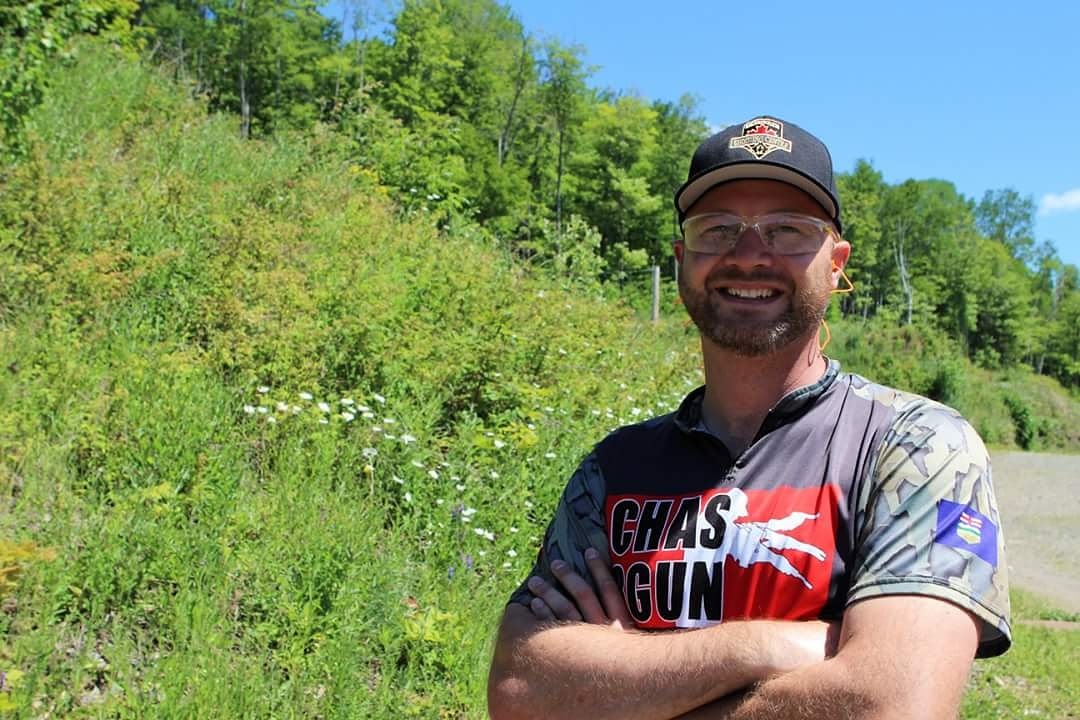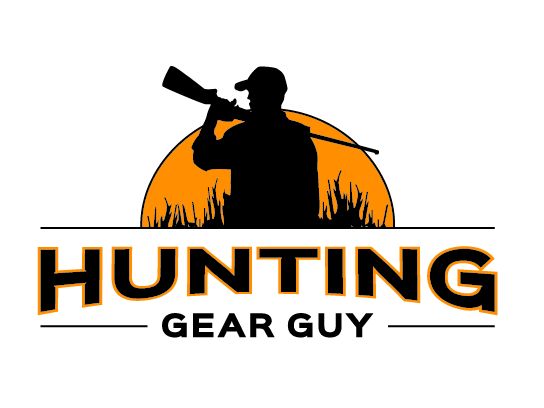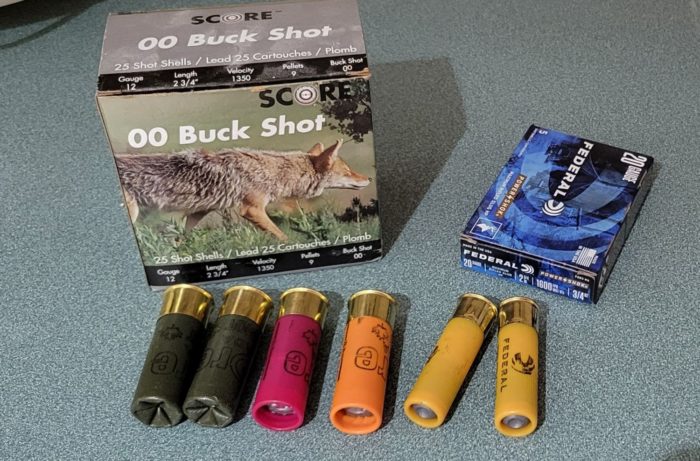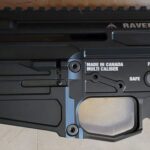I’ve got a chance at hunting an area with a ton of deer this year but it’s shotgun/muzzleloader/bow only. I’ve done some bow hunting, mostly rifle, but I have yet to use a shotgun to hunt big game. I have more than a few smoothbore shotguns so I wanted to see what kind of energy and ballistics I could get with them.
Summary up top: buckshot is very limiting, standard slugs offer a lot more usable range, and sabot slugs in a rifled shotgun barrel will offer even more range at the expense of some flexibility.

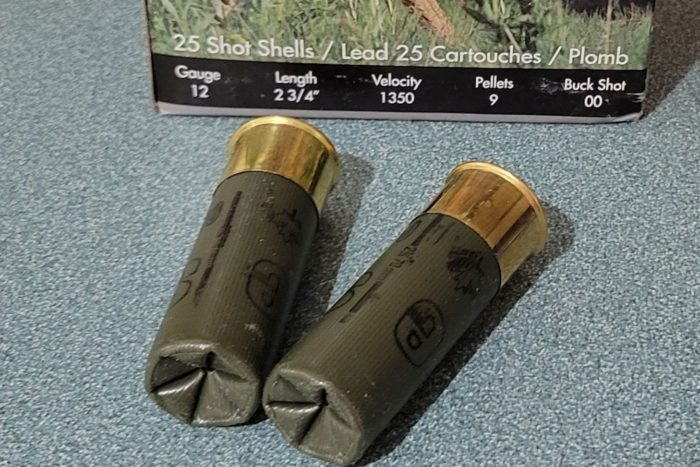
Buckshot Pros
Everyone knows buckshot from video games: it’s super powerful up close but spreads out and is basically worthless beyond point blank right? Well, not really but kind of. It’s no more or less powerful than a slug at close range but it does offer a few other advantages:
Shooting through brush: While a single projectile might get thrown wildly off target by hitting a branch on the way, if you’re shooting 9 “00 buckshot pellets, you have more chances of getting a few clear through.
Less precise shot required: Buckshot at range gives a pattern that allows for some variance in aim but if you’re close and your pattern is tight, you still need to aim precisely. And, if your aim is off and you shoot at a further game animal, fewer of your pellets will hit the deer and/or hit the deer in the wrong spot.
Buckshot Cons
Projectile weight: A lead #1 pellet is 40 grains: the same as a 22LR bullet. Would you hunt deer with a burst of a full auto 22LR? Probably not. 00 buck is not much better at 54 grains. Low weight pellets won’t smash through leg bones or shoulders as well as a single bullet will.
Poor BC: Yeah, many shotshells will start with the pellets going 1300 fps but they slow down very quickly, with most pellets getting down below 1000 fps by 30 yards. Buckshot pellets are hot trash for ballistics and they lose energy very quickly. You might kill deer at further distances but it’ll be with subpar energy, a very wide pattern, and higher risk to wound instead of kill.
Gut shots: The downside of all those pellets is that some are going to go where you don’t want them. If the pattern’s big, they’ll get in the good meat in the backstraps, hit the guts and make a mess inside the stomach cavity, etc. I’m not a super big fan of skinning gutshot deer: it stinks and it ruins meat.
Matching Choke Selection to distance is key: You need to pick the right choke for the distance you shoot your deer to see the benefits of shooting buckshot. Too tight and you might as well be using a slug. Too loose of a pattern and you’ll miss some pellets or get them in places on the deer that you don’t want. If you can precisely predict the distance where the deer will pop up such as if you’re shooting from a blind or over bait, that’s fine.
Buckshot conclusion: Given what slugs can do, I see buckshot as being too restrictive. Maybe if you’re hunting in a built-up area that mandates shot instead of slugs or in super thick brush where you need to smack a deer that’s got branches in front of it. I don’t like the risk of getting a gut shot or poorly wounded deer just because they were at 50 yards.
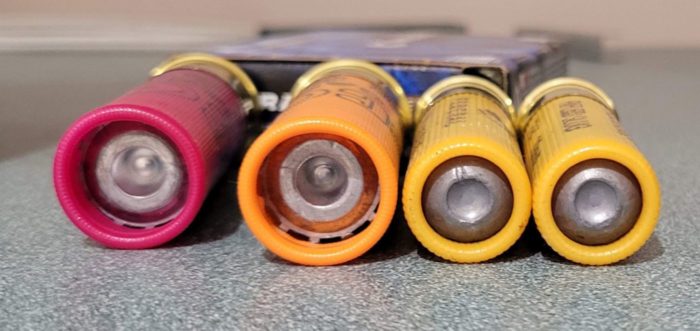
Slug pros:
Lethal at longer distances: Buckshot is ideal for shots inside 25 yards, 50 at a stretch with appropriate shot+choke+shooter combo. Slugs are good to go up to about 100 yards: both because they carry their energy further than pellets and because they put all their energy in one spot.
I know this is just one point but I think it’s enough. Buckshot just doesn’t have the distance that a slug will.
Less spoiled meat: aim for the heart and lungs, get the heart and lungs and nothing else. No gut shots unless you mess up your shot.
Slugs will go through bone better than buckshot. There’s way more weight, it’ll deal with thicker bones better than buckshot.
Slug cons:
Still shitty BC: Yeah, it’s way better than buckshot but still pales in comparison to real rifle bullets. A G1 BC of 0.10 is about as aerodynamic as a bus and those poor aerodynamics sap speed and energy quickly for further game animals. Non-magnum slugs are below 1000 ft-lbs of energy by 125 yards, while shoulder-bruising magnums will carry more energy further but only with plenty of recoil.
In an 8lb shotgun, firing Federal’s 3″ 1 1/4oz slug will pull an incredibly impressive 45.8 ft-lbs of recoil energy. Ouch!
Different point of impact: A casual shooter might not notice if the shot pattern hits 6″ to the left at 25 yards but if slugs do that, you’ll be hitting 24″ to the left at 100 yards. Many shotgun barrels send slugs out at slight deviations from dead straight and you’ll need to shoot your shotgun at the range to find out what that deviation is. To handle the correction, you’ll need to either hold off target or use a red dot or small scope.
What about Sabot Slugs?
Sabot slugs use a plastic sleeve around the bullet to:
- Engage with barrel rifling and twist stabilize the bullet
- Allow for smaller diameter, lighter bullets that are more aerodynamic at 0.19 G1 BC instead of the typical forster slug BC of around 0.10 G1.
Sabot Slugs:
Since sabot slugs are more aerodynamic and carry their energy further, you don’t need face-melting muzzle energy. You can get similar long range ballistic performance to a 3″ magnum slug with 40% less recoil. Still uncomfortable compared with most hunting cartridges but better than magnum slugs.
The bullets themselves are also better constructed. Instead of soft lead that may flatten out and give inconsistent penetration, sabot slugs have copper jackets that help control expansion and penetration.
Shotguns made for Sabots:
Sabot slugs require the use of a rifled shotgun barrel that’s only really good for sabot slugs so you lose some flexibility in being able to do ducks/geese with the same barrel. For that tradeoff, they provide MUCH better accuracy (~2″ groups at 100 yards) and range. With a sabot slug shotgun, 150-200 yard shots are possible.
Generally, purpose-built slug shotguns are also made for better accuracy and further distances. Just take a look at a Savage 220 and you’ll see a bolt action shotgun with standard scope mounts and a rifled barrel. It just so happens to be in a shotgun cartridge but it’s kitted out like a centerfire hunting rifle. Many other “slug guns” include rails that are a great match with a low power scope.
All that said,
Sabot slugs still have crappy BC. I mean, we’re finally at 0.20 G1 but regular old hunting bullets will be 0.4-0.5.
Even if you were to go best case and fire Litefield’s now discontinued 3.5″ sabot slug with a rifled barrel and shoulder destroying 91 ft-lbs of recoil energy, you still only carry 1000 ft-lbs of energy out to 250 yards. Even a 243 can carry that amount of energy to 335 yards (more popular hunting cartridge ballistics compared here).
Shotguns are not a replacement for rifles, even if they’re purpose-built slug guns. Long range >200 yard shots will still be better done with a centerfire rifle instead of a shotgun of any sort.
Conclusion
At a high level:
Buckshot is only optimal in incredibly thick brush where your shots are inside of 25 yards.
Slugs are good for more practical range but you still need to know where your slugs hit as they may not hit where the bead suggests.
Sabot slugs with a rifled shotgun barrel offer the best accuracy and ballistics and reduce the risk with further shots but you’ll need to swap barrels to go back to hunting ducks/geese/upland bird. Rifled shotgun barrels also cost more.
Other interesting reads on the topic that I found while researching:
